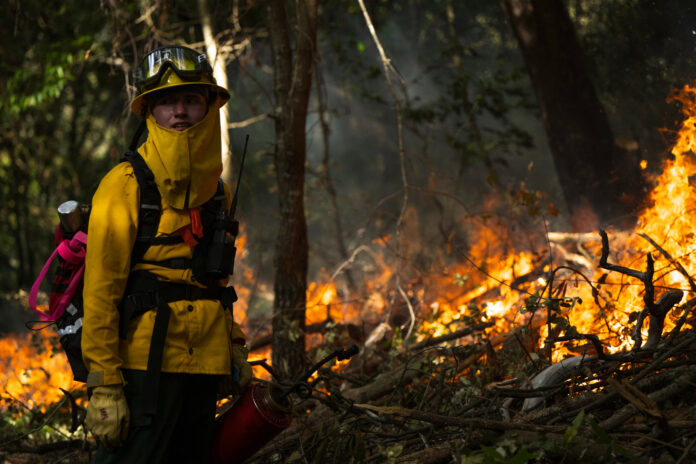California residents have seen several insurers end homeowner insurance policies as the state grapples with wildfires and natural disasters, but a new proposal seeks to solve the insurance crisis once and for all.
In March, Ricardo Lara, California’s insurance commissioner, unveiled his new plan to let insurance companies use specific models around future catastrophes to implement higher rates on homeowners. The new plan would allow the use of catastrophe modeling to calculate rate increases for wildfire, terrorism and flood protection on homes and commercial property.
The change would ideally keep more insurers within the state despite the mass wildfires plaguing the area.
“We can no longer look solely to the past as a guide to the future,” Lara said in a statement. “My strategy will help modernize our marketplace, restoring options for consumers while safeguarding the independent, transparent review of rate filings by Department of Insurance experts, which is a bedrock principle of California law.”
NIC COURY/AFP via Getty Images
Other states already allow insurers to use catastrophe models to calculate insurance rates, but California previously barred this practice and allowed insurers to look only at historic losses as a measure.
“Accurate data is the foundation for any financial decision, regardless of who it benefits,” Alan Chang, the founder and president of Vested Title & Escrow, told Newsweek. “Catastrophe modeling seems to be one of the gaps between California and most other states when it comes to rate filing decisions.”
Still, Chang cautioned that California differs from other states because of its unique housing risks.
“There are not too many parts of the country where you have the population and housing density that are susceptible to both wildfire and flood risk, among typical loss drivers,” he said.
Across the state, homeowners have complained about skyrocketing premiums and the loss of coverage as large insurance companies, including American National and State Farm, abandon policyholders. The increasing prices also contribute to the state’s already troublesome lack of affordable housing, which has pushed many residents to migrate to cheaper parts of the country.
American National, a Texas-based private insurer, previously announced it would stop offering homeowner insurance policies in the fall and would send nonrenewal notices by August.
Meanwhile State Farm, Allstate and Farmers paused new policies or set new limits on them, affecting more than 40 percent of the state’s home insurance market.
On March 20, State Farm said it would discontinue coverage for about 30,000 homes and 42,000 commercial apartments in the summer amid rising costs and reduced profits in the wildfire-prone state.
“With one provider just announcing nonrenewal of over 70,000 policies, I’m sure that a large part of the population is nervous about possibly having to find alternative coverage,” Chang said.
The Department of Insurance is asking for public comments on the new measure, with a workshop scheduled for April 23. The department is looking to pass its new regulations before 2025.
Lara has also proposed for faster rate increases by insurers but received pushback ahead of the hearing scheduled for March 26.
Insurers previously listed three demands to help them offer coverage within California, including faster rate increases and catastrophe modeling.
They also asked for regulations that would permit them to charge policyholders for reinsurance, which would reduce any exposure to catastrophic loss.
In September, Lara said in a statement that if the new regulations passed, insurers would need to offer 85 percent statewide home insurance market share in the areas most prone to wildfires.
“It’s unclear at this point if this will be a win for insurance companies or homeowners in the long run,” Cody Horvat, a real-estate broker at the Scott Group, told Newsweek. “If rates follow a similar path seen in hurricane-stricken areas of Florida, insurance companies will likely come out on top.”
Uncommon Knowledge
Newsweek is committed to challenging conventional wisdom and finding connections in the search for common ground.
Newsweek is committed to challenging conventional wisdom and finding connections in the search for common ground.


